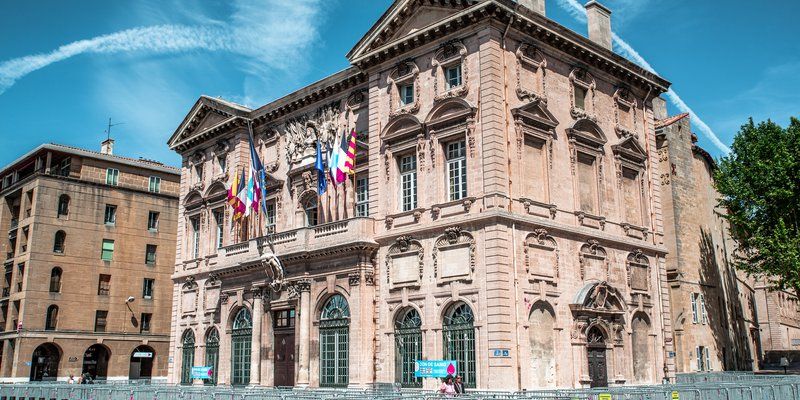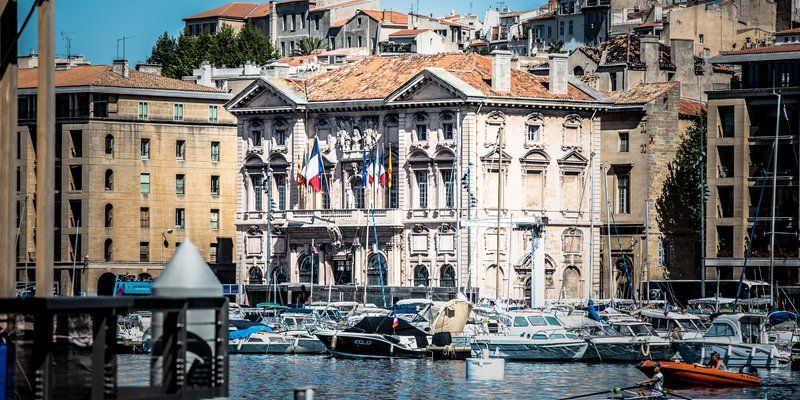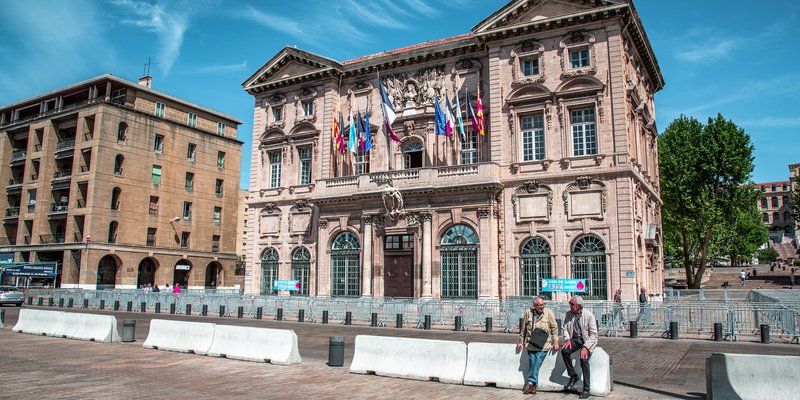Standing proudly in front of Notre Dame de la Garde, on the right bank of the Old Port, you can't miss it.
City Hall through the History of Marseille
Historical background
Before the construction of the building we know today, there was La Maison de Ville. Built in the 13th century, it brings together the merchants and consuls of the Phocaean City. In 1653, Louis XIV wanted the city to be transformed. For this reason, he asked that Marseille be managed by aldermen. He also changed the port regime. As suggested by the First Consul Gaspard de Villages, the Maison de Ville was destroyed in order to accommodate the future City Hall. And it is the architect Jean-Baptiste Méolans who was in charge of the project.
A laborious construction
In 1653, construction began, but the lack of funding and the disorders in 1660 considerably slowed down the progress of the work. The project was taken over in 1666 by Gaspard Puget (Pierre Puget's brother, who only made the crest on the main door now relocated to the Musée des Beaux-Arts, the current one being a copy) and was completed twenty years later, in 1673.
The municipal authority is reinforced by the ceremonial façade facing the sea, in front of the galley arsenal on the opposite bank, which symbolized royal power. It barely escaped demolition during the Revolution, however, when Marseille was called the "nameless city" by the revolutionaries.
A building that stands the test of time
Despite its complicated beginnings, the City Hall has survived the ravages of time and seems to be lucky. It has indeed escaped from destruction twice! First of all during the French Revolution, when rumors accused it of being a den for the Royal Monarchy's followers. Then, during World War II, when the Germans bombed Marseille in 1943, the Town Hall was one of the few that was not destroyed.
A unique architecture
The people of Marseilles soon nicknamed it "the lodge" in reference to the loggia in Italian, which reflects the influence of the Genoese palaces. It is divided into two parts: the original part, which includes the Puget Pavilion, which is the part overlooking the port. It has a balcony with a magnificent view over La Bonne Mère and the Old Port, which belongs to the mayor's office. The Pavilion is connected to the Bargemon Pavilion by a kind of archway located on the rear side of the building.
The building has a particularity: there is no staircase leading from the ground floor to the 1st floor. This requires going through the building behind, connected by a bridge to City Hall. This curiosity is explained by the customs of the old days, which wanted merchants to be separated from aldermen. The first ones were on the ground floor, while the second ones were on the first floor.
This monument has a special status in Provençal Baroque art in Marseille because of its strong Genoese influences. It was also classified as a Historical Monument on April 30, 1948.
Marseille City Hall today
Since 2006, the Municipal Council has been meeting in the Espace Villeneuve-Bargemon, located under Place Bargemon. The Espace also has meeting rooms.
Today, recent development work to expand the building and its surroundings have been completed. A new 20,000 m² public space was created between the Old Port and the Hôtel Dieu, becoming at the same time the largest esplanade in the city.
If you are planning to visit Marseille, plan to stop and contemplate this building, which may not be very large but is full of history.
Just in front of the Town Hall, you can get on the Petit train Marseille and take a walk in the streets of the city, to discover its monuments. Remember to buy tickets at the ticket office to avoid long queues. Segway rental or bicycle rental are also perfect for discovering Marseille in a fun way.



